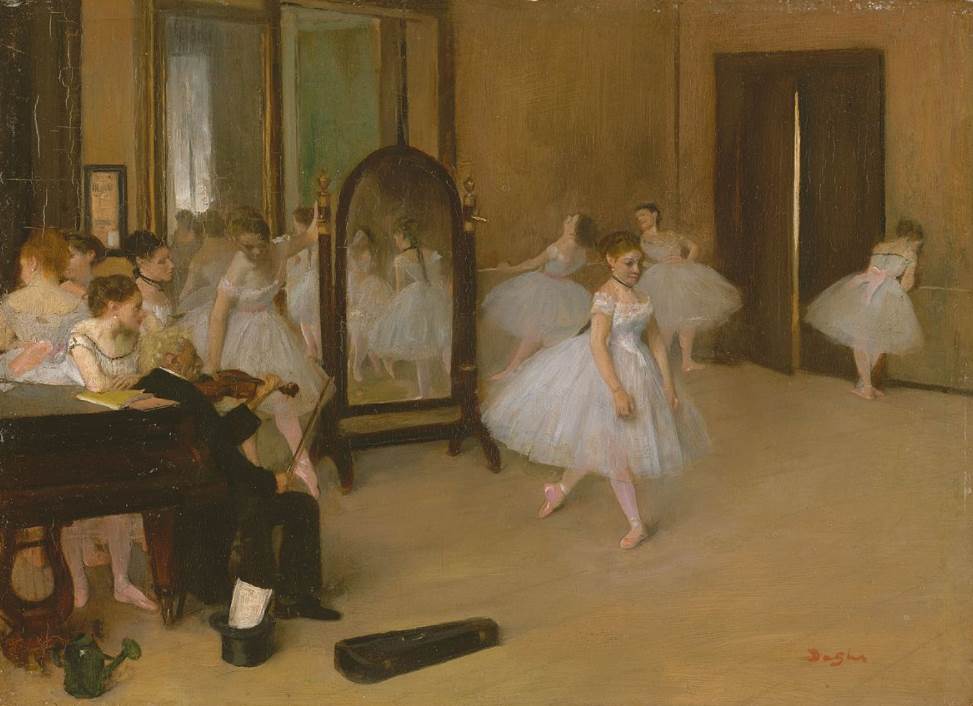The “Met” is the commonly used name of the Metropolitan Museum of Art in New York City. It’s the largest art museum in the United States as it has a collection size of over 2 million items.
The entrance is located at 1000 Fifth Avenue along the eastern edge of Central Park in the Upper East Side of Manhattan. The remarkable fact is that the museum is situated within the park’s boundaries.
This section of the city is referred to as the “Museum Mile” as both the Solomon R. Guggenheim Museum and the Jewish Museum are located here as well, to name just a few.
The museum’s history dates back to the incorporation of the Metropolitan Museum of Art on April 13, 1870. The museum opened its doors less than 2 years later on February 20, 1872.
The range of items on display at the museum is extremely diverse, ranging from artifacts from classical antiquity and ancient Egypt to paintings of just about any European master in history.
Let’s take a closer look at some of the most famous paintings at the MET, artworks that you simply have to see when you plan on visiting this amazing museum.
1. Water Lilies – Claude Monet
- Date Created: 1920
- Dimensions: 200 × 1276 centimeters (78.74 × 502.36 inches)
The title “Water Lilies” refers to a series of about 250 oil on canvas paintings that French Impressionist artist Claude Monet (1940-1926) painted. These paintings are some of his most famous works and are located in museums all over the world.
The painting by Monet located in New York is called “Reflections of Clouds on the Water-Lily Pond” and was painted during the final decade of man’s life. Many of these works have sold for millions of dollars, making them some of the most expensive paintings in the world.

2. Washington Crossing the Delaware – Emanuel Leutze
- Date Created: 1851
- Dimensions:
Washington Crossing the Delaware is a history painting created by German-American artist Emanuel Leutze (1816-1868). It depicts the moment that George Washington crosses the Delaware River with eh continental army on December 25 and 26 of the year 1776.
This surprising move was the prelude to the Battle of Trenton which took place on the morning of December 26, 1776, a key moment in the American Revolutionary War. The original version of this painting was destroyed in 1942 during an air raid on the German city of Bremen.
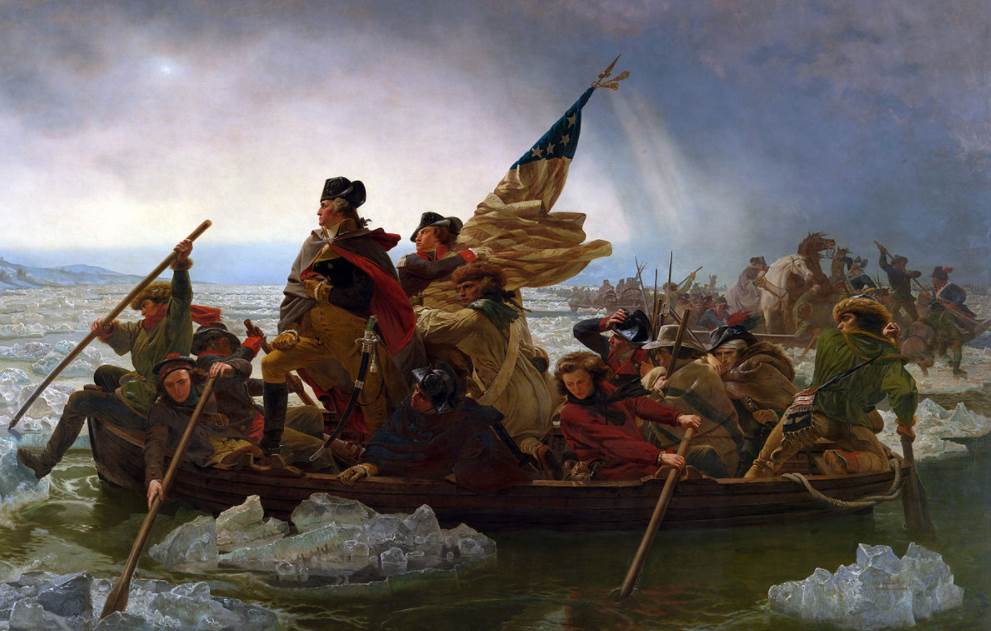
3. Woman With a Water Jug – Johannes Vermeer
- Date Created: 1660-1662
- Dimensions: 45.7 × 40.6 centimeters (18.0 × 16.0 inches)
Woman With a Water Jug is a delicate little painting by the famous Baroque artist of the Dutch Golden Age Johannes Vermeer (1632-1675). It depicts a woman in a domestic scene, a trademark painting of the artist of the 17th century.
The painting was brought to the United States in the late 19th century after being bought in a Paris auction for $800, a hefty sum at the time. It’s a remarkable work because it was the first painting of Johannes Vermeer to arrive in the United States.

4. View of Toledo – El Greco
- Date Created: 1596-1600
- Dimensions: 121.3 × 108.6 centimeters (47.8 × 42.8 inches)
View of Toledo is arguably one of the most famous paintings by Greek-Spanish painter and Mannerist artist Doménikos Theotokópoulos (1541-1614), better known by his nickname “El Greco.” This is a reference to his Greek roots after establishing himself in Spain.
As the name of this remarkable painting in the oeuvre of El Greco suggests, it depicts the city where he lived and worked during the final decades of his life. The iconic gloomy sky and the fact that it’s one of just two surviving landscapes paintings he created make this a remarkable work.

5. The Gulf Stream – Winslow Homer
- Date Created: 1899
- Dimensions: 71.4 × 124.8 centimeters (28.1 x 49.1 inches)
The Gulf Stream is one of the most renowned works in the oeuvre of American realism artist Winslow Homer. It depicts a small boat that is fighting the mighty waves of the Gulf Stream in the Caribbean with a desperate-looking man in it.
Homer crossed this wavy sea multiple times during trips to the Caribbean so he tied to create a realistic version of a theme he had been interested in for over a decade. The painting was followed by another work entitled “After the Hurricane” which depicts the same man washed up on a beach.

6. Madonna and Child Enthroned with Saints – Raphael
- Date Created: 1503-1505
- Dimensions: 172.4 × 172.4 centimeters (67.9 × 67.9 inches)
Madonna and Child Enthroned with Saints is also known as the “Colonna Altarpiece” and is the only altarpiece by renowned Renaissance artist Raffaello Sanzio da Urbino (1483-1520), better known as simply Raphael, in the United States.
This painting by Raphael has an extensive history and was eventually bought by the Colonna Family in Rome from the extensive Orlean Collection. It was bought by rich investor J.P. Morgan in the 20th century. Other panels of this work are located in museums all around the world, including two in London and one in Boston.
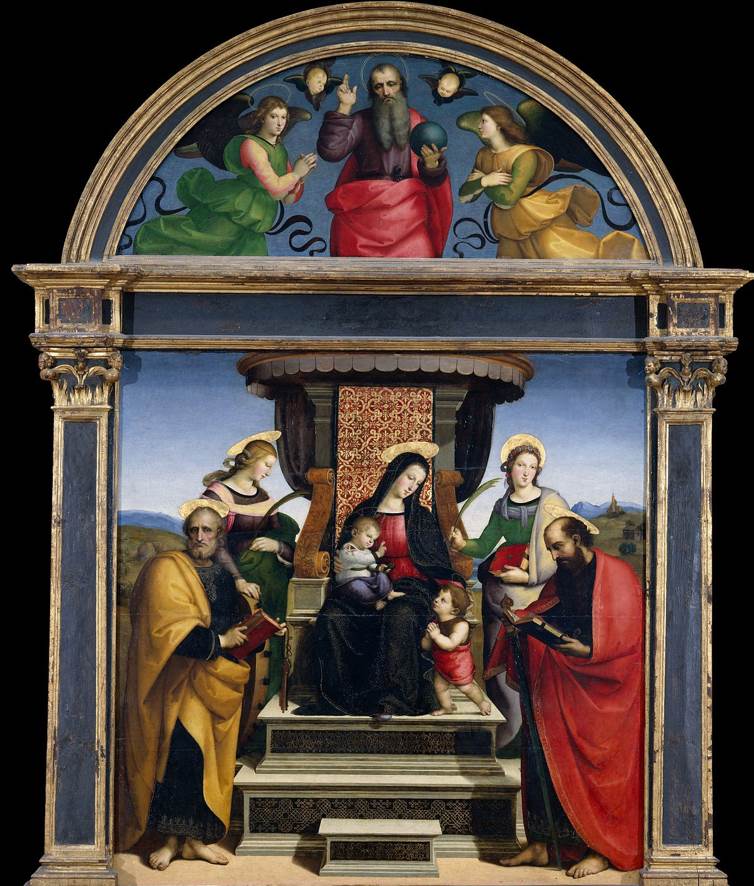
7. The Death of Socrates – Jacques-Louis David
- Date Created: 1787
- Dimensions: 129.5 × 196.2 centimeters (51.0 × 77.2 inches)
The Death of Socrates is one of the ultimate masterpieces of the Neoclassical artist, and one of the most renowned artists of this movement, Jacques-Louis David (1748-1825). It depicts the execution of Socrates according to Plato in his work “Phaedo.”
The man n the white robe represents Socrates who is offered a cup of poison. He was sentenced to death for corrupting the youth of Athens with his philosophical stories and was forced to drink poison hemlock, an especially poisonous type of plant.
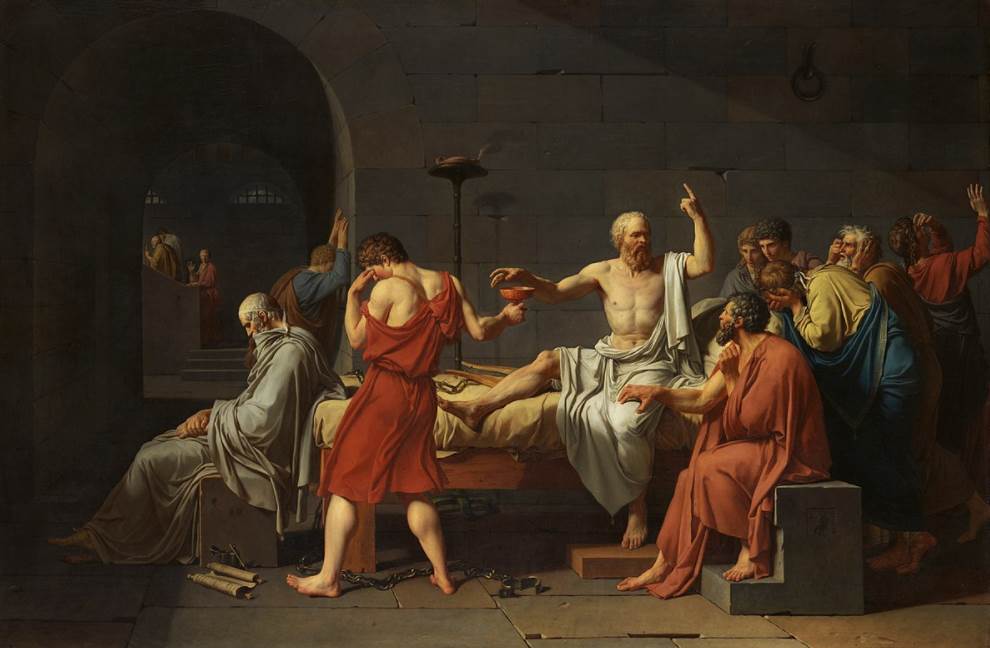
8. The Musicians – Caravaggio
- Date Created: 1595
- Dimensions: 92 × 118.5 centimeters (36 × 46.7 inches)
The Musicians is one of the early works of Caravaggio (1571-1610), one of the most talented, yet troubled artists of the Baroque period. It was created shortly after he entered the household of Cardinal Francesco Maria Del Monte following his flight from Milan.
This is a remarkable work in the oeuvre of Caravaggio because it was a period in which he was still struggling to make a name for himself in Rome. This eventually happened but his life was full of controversy and brawls and was subsequently cut short in mysterious circumstances.
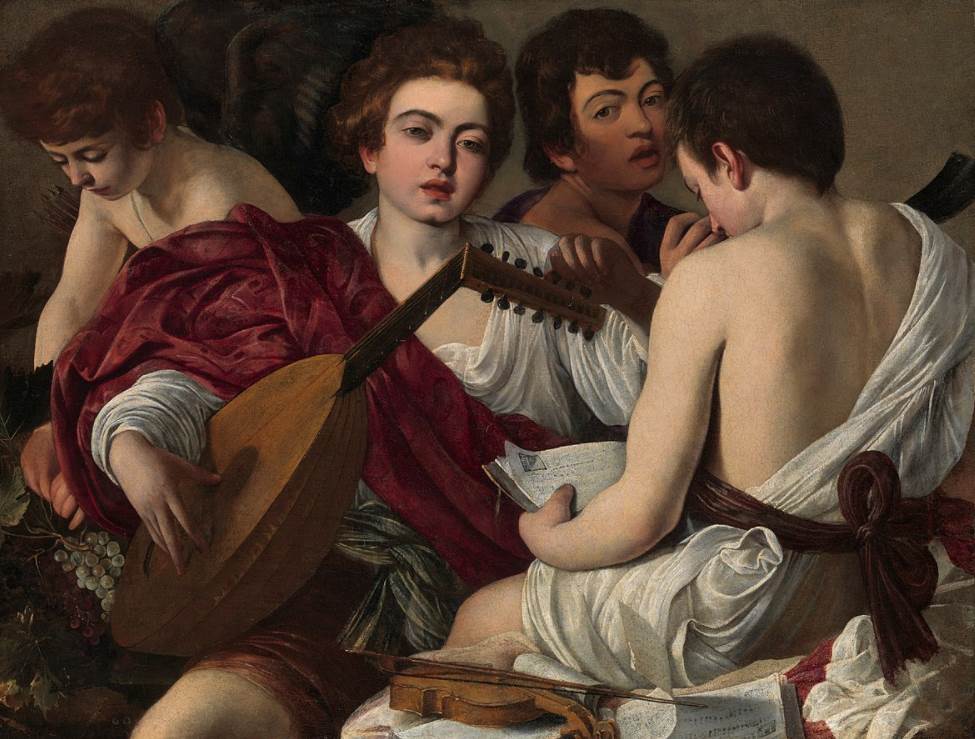
9. The Harvesters – Pieter Bruegel the Elder
- Date Created: 1565
- Dimensions: 119 × 162 centimeters (46.87 × 63.75 inches)
The Harvesters is a 16th-century painting depicting the harvest somewhere in modern-day Belgium during July or August. Even though the exact location is unknown, it’s probably around the city of Antwerp where he lived and worked for most part of his life.
This painting is one of a series of paintings depicting rural life in Belgium during this period in history. Some peasants can be seen harvesting while others are seen consuming food, a reference to the result of the harvesting being done.
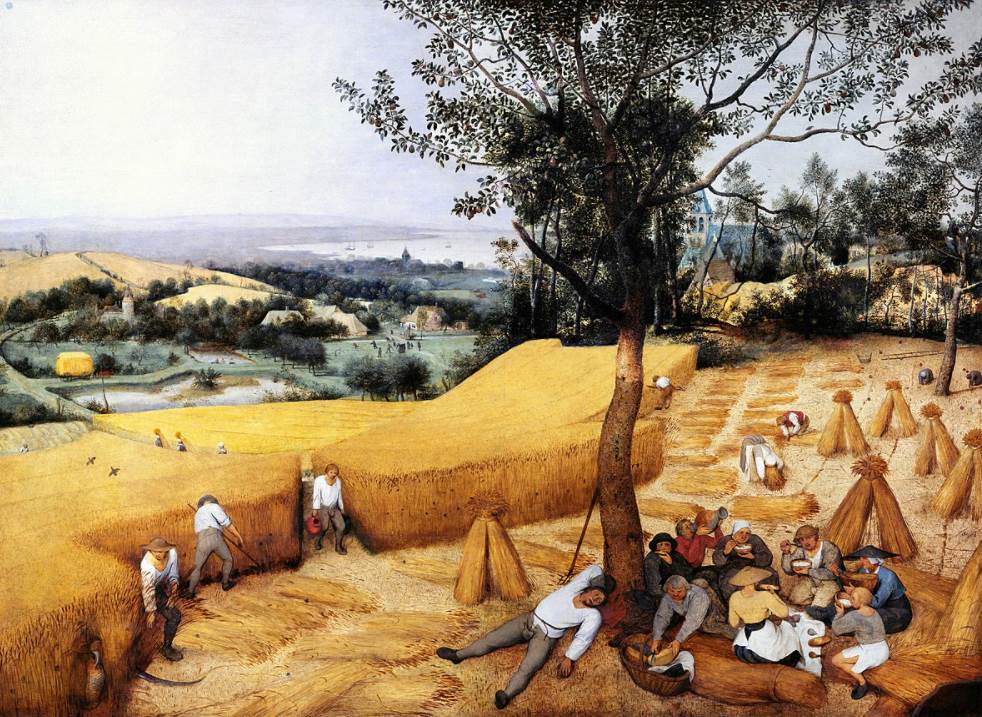
10. The Dancing Class – Edgar Degas
- Date Created: 1870
- Dimensions: 19.7 × 27 centimeters (7.8 × 11 inches)
The Dancing Class is the smallest in our list of the most paintings at the MET in New York City, yet one of the most fascinating ones. It was the first of a series of paintings related to ballet painted by French Impressionist artist Edgar Degas (1834-1917). He created the work using models who posed in his studio.
Many of his paintings emphasize his excellent talent to capture movement, something that shines through in his works related to ballet dancers. This delicate little work depicts dancers at the Paris Opéra. Other works in this series of paintings are on display in museums all around the world.
